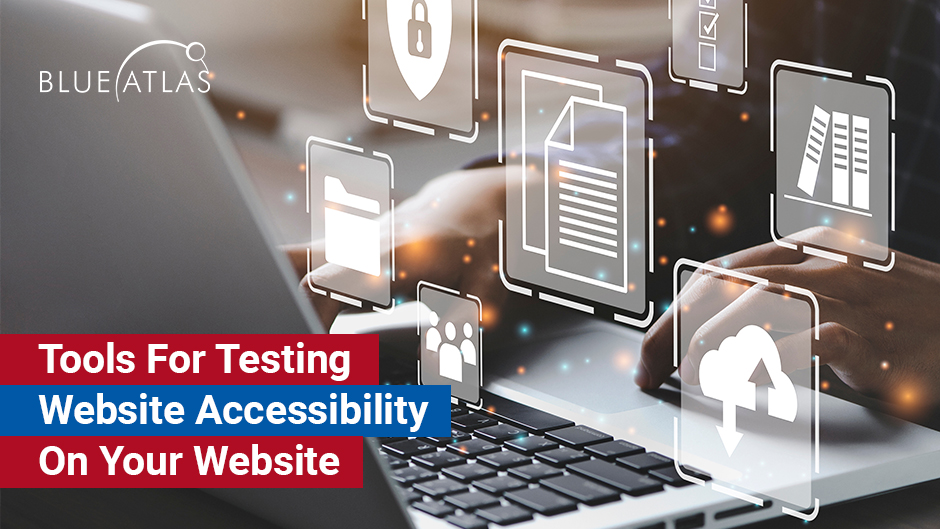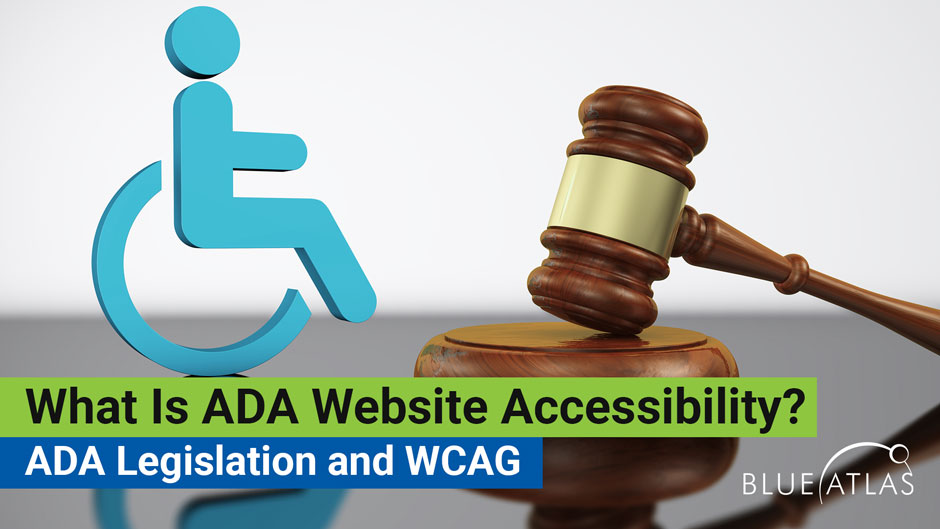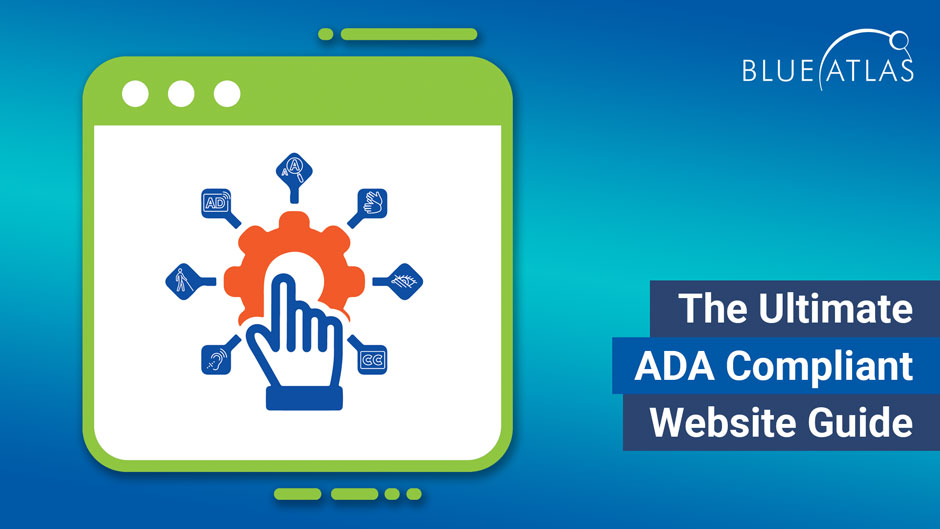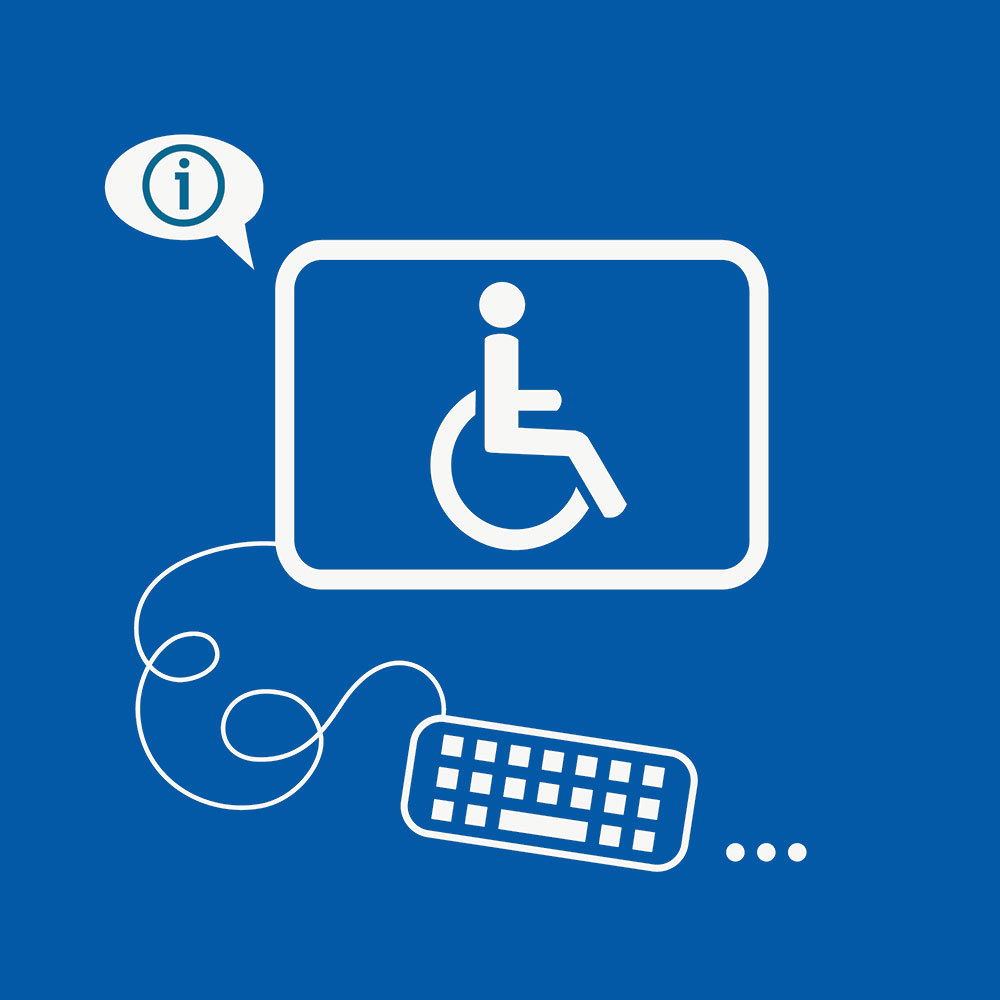Why Healthcare Companies Must Prioritize Website Accessibility
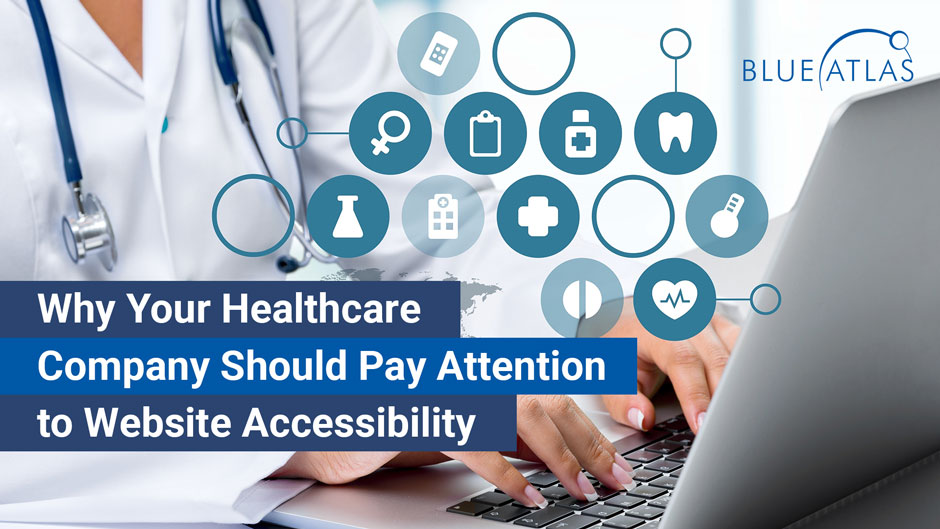
Online support is increasingly vital for healthcare organizations of all kinds. Patients are using website portals to look for doctors, make appointments, and find clinics. The COVID-19 pandemic years also emphasized just how important remote interviews and diagnosis have become, accelerating upgrades to online healthcare capabilities.
That brings us to accessibility – making sure your website is fully usable by individuals with disabilities. That’s not just important because those with disabilities need targeted types of medical care, but because it’s a requirement of the ADA (Americans with Disabilities Act) and multiple state laws.
While healthcare organizations are used to the physical aspects of the ADA in their buildings, those accessibility mandates have also been shown to apply to related websites. That includes compatibility with screen readers, easy keyboard navigation without a mouse, and much more. Here’s why that’s becoming so important.
Accessibility Compliance Helps Avoid Lawsuits and Fines
There is a trend of new lawsuits filed specifically against websites, claiming that they violate the requirements for ADA-mandated accessibility. One of the most famous examples was a case in the latter 2010s where a blind man sued Domino’s because he could not use their website, a lawsuit that eventually made its way to the Supreme Court, which awarded the man a victory.
These lawsuits target businesses that don’t have much experience in accessibility, and haven’t designed parts of their websites with it in mind. They are often filed in jurisdictions that have proven friendly to ADA lawsuits in the past to increase the chance of forcing a settlement. Often, their evidence uses automated accessibility tools that run basic checks on a website and report a list of possible “errors.”
These tools can be useful if used by experts, but the errors they report aren’t necessarily an ADA issue, and it can be overwhelming for surprised organizations to deal with. The healthcare industry may face a heightened risk of such lawsuits because of the nature of its work, and the reasons patients may want to file a suit against a clinic or hospital.
Ensuring accessibility compliance with experienced professionals will not only make these lawsuits much less likely. It will also give healthcare organizations information and tools to argue for the dismissal of the accessibility lawsuit.
Don’t forget about official fines, either: A certain amount of accessibility is required by both federal and state laws, and organizations may be fined thousands of dollars following an official investigation. Again, this is an area where healthcare companies may be at greater risk due to the important of their work and related patient complaints.
Accessibility is a Way to Draw In New Patients
According to CDC data, 61 million adults in the United States have a disability of some kind. That’s around ¼ of the entire adult population – a significant pool of potential patients and employees that healthcare organizations should not ignore.
This is why revising a website to support accessibility can be an effective way to win over new patients who may be struggling to find a healthcare service that supports their disability in their online portals. These benefits can snowball over time, too, because disabled communities frequently share information about what local businesses or services are the most accessible. They also have search engines like accesssFind dedicated to specifically search for websites that are accessible and filtering out those that aren’t.

Compliance is Excellent Marketing for Healthcare Services
When patients are looking for new healthcare services, they want an organization that’s helpful, accommodating, and knows how to show care to individual patients based on their unique needs. Accessibility compliance is an excellent way to advertise this kind of accommodation and make the organization attractive to newcomers. In other words, marketing teams love accessibility standards because it allows them new advertisement opportunities.
Some websites even have a dedicated page explaining their accessibility, how it currently works, and any accessibility changes that are planned for the future. Others may have a simpler statement noting that they support all individuals with disabilities and have made the website compliant with the ADA. Either way, it’s helpful for the organization’s brand, and provides new content that can be referenced in social media and more.
Users Without Disabilities Also Love Accessibility Upgrades
While some accessibility changes target specific assistive technologies like screen reader, many accessible standards make websites easier to use for everyone. Compliance leads to text that easier to read, menus that are easy to navigate, and images or interactive elements that function well on mobile devices. It also ensures that the language and instructions on a medical portal are easily understood by all kinds of users, and that the site is organized in a way that makes sense so they can find what they are looking for.
By adopting accessibility standards, healthcare organizations can also upgrade their websites in many universal ways that improve them as a whole. And that’s particularly important when patients are completing medical processes online.
Accessibility Pertains to Many Healthcare Technologies
Mastering technology for a website is also an effective way for hospitals to start making sure that all their medical technology is appropriately compliant. That includes any in-house technology that may be used by patients, from self-diagnostic tools to computer devices meant for entertainment. It also applies to monitoring technology that employees may be using, and any streaming services that the organization has for remote evaluations. The techniques and knowledge used in making websites compliant can also be used to make all these additional cases more accessible for patients and workers alike.
It Can Help Meet Future Compliance Standards
Increasingly, we find that accessibility requirements are baked into the latest healthcare compliance, moving from “best practices” to being mandated within the healthcare industry itself. Guaranteeing accessibility now is one of the best ways to stay ahead of future requirements. That way, when healthcare standards receive large updates, such as for HIPAA, your organization doesn’t have to worry about details like making everything accessible, because they are already starting with an accessible foundation. That can save time and money during important transitions.
Where Should Your Healthcare Organization Begin?
Making complete online accessibility changes can be challenging without a roadmap and developers that understand how to ensure compliance. Blue Atlas Marketing can help: Our experienced team of developers is experienced with upgrading websites in many ways, including achieving full accessibility compliance.
If you’d like to know more, there’s an important first step you can take. Get access to our free ADA audit. This audit is an excellent start to reviewing the current state of your website, and what an accessibility plan would look like in your situation. Contact us to start the process and learn more about what today’s accessible websites look like.



